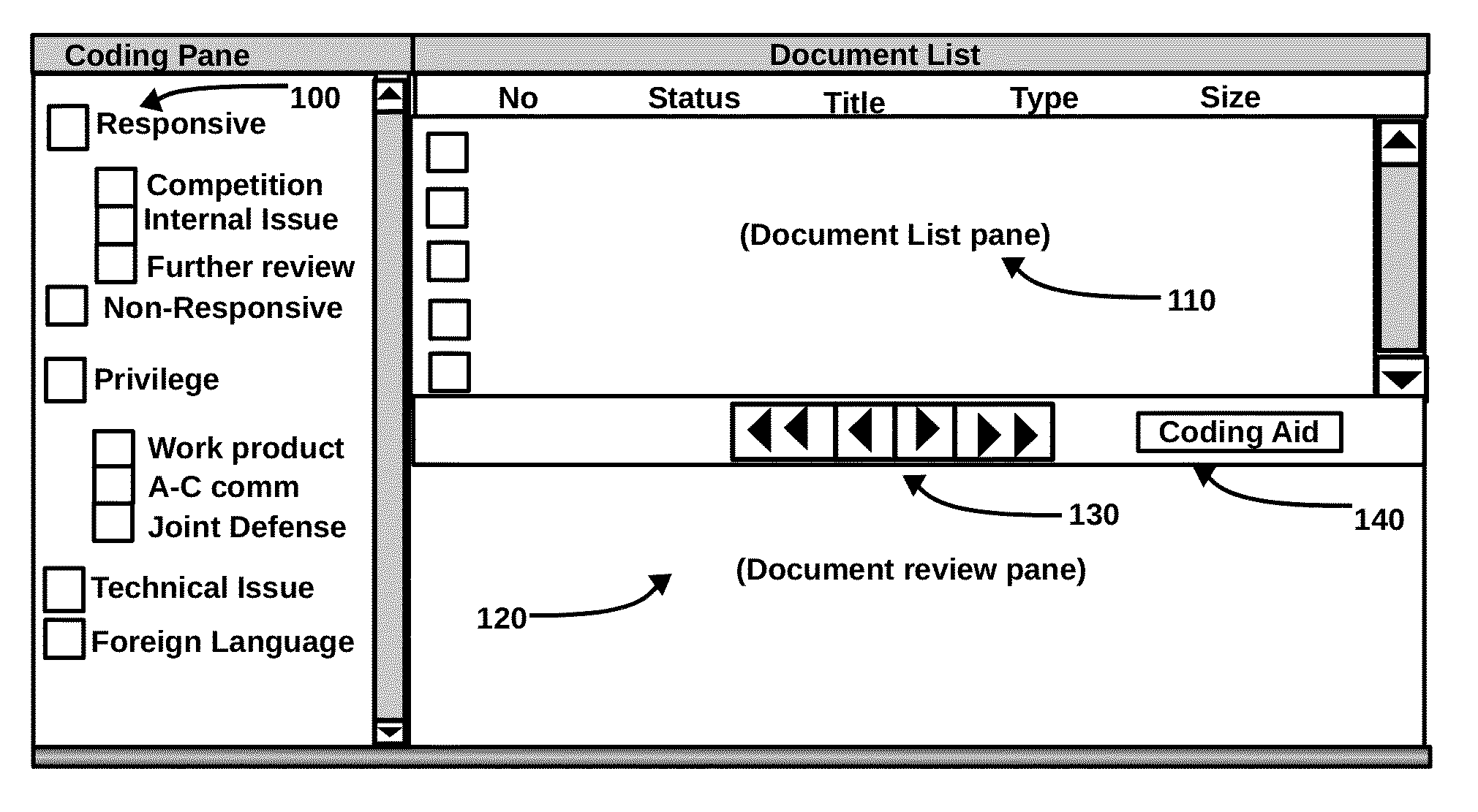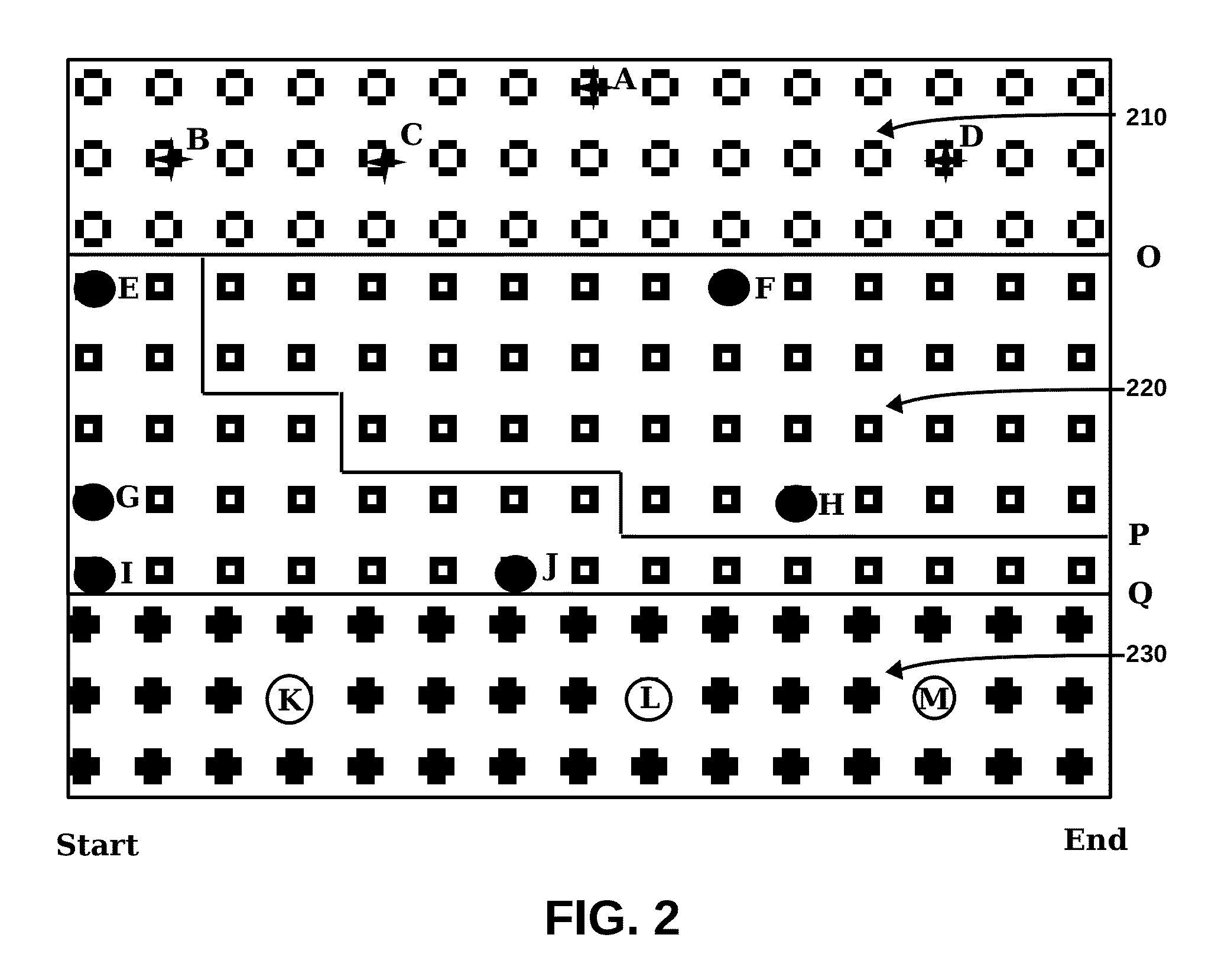Method for Improving Document Review Performance
a document review and performance technology, applied in the field of document review methods, can solve the problems of inequitable conduct, patent validity, patent misuse, and failure to disclose important information, and achieve the effect of quick and convenien
- Summary
- Abstract
- Description
- Claims
- Application Information
AI Technical Summary
Benefits of technology
Problems solved by technology
Method used
Image
Examples
example 1
Identification of Lawyers
[0178]A reviewer ran into a suspicious attorney, but could not determine whom the lawyer worked for. A search in the names table returned no record. Thus, the reviewer knew the identity of the person had not been resolved as of that point. Later, the reviewer saw a retaining agreement, a billing statement, or a statement mentioning “I will send my draft to client X for further comment.” At this point, the reviewer knew who the lawyer worked for and this was a critical fact in determining privilege. The reviewer tried to enter this attorney name in the name table with the document ID. Since the fact alone does not require the reviewer to make a definite coding decision, it should be entered in the names table. This newly entered record is a tentative record, but the correct citation of the document ID would allow other reviewers to validate this elementary fact.
example 2
Identification of Infringing Products
[0179]In a patent infringement action, one of the tasks is to identify alleged “infringing” products. A party might have hundreds of products and each of them may have unique brand name, product model code, serial number, common name, and informal name. A document may only refer to a product by one of the terms. A reviewer encountered a model number. A search in the system using this model number returned nothing so the reviewer had to code some documents by best guess. The reviewer later encountered a document, which discusses this product and its relationship with the patent-in-suit. At this point, the reviewer knew it is an alleged “infringing product.” The reviewer thus decided to enter this elementary fact. At this point, the reviewer found another reviewer had just entered a tentative record concerning the nature of the product. Therefore, the reviewer had no need to enter a duplicate record. However, the reviewer cast a vote for that tenta...
example 3
Bribery Investigation
[0180]A reviewer ran into a highly suspicious person who is identified by a strange email address. The email was not found in the names table. Other emails revealed small bits of information: one email revealed that the person had certain medical problems; one email indicated that the person had vacation to play golf, and one email reveals that the person recently lost a lot money and needed “financial help in a big way.” The experienced reviewers entered pieces of information about this person by using the same email address. One reviewer later ran into a document that described several board members. One of them owned great equity interest in the company and his company lost substantial stock value. Another document showed that this board member had won golf title in various golf events. Whether an investigator could find the identity of this suspicious person would depend upon if the review team could identify all those leads. If they collected all useful lea...
PUM
 Login to View More
Login to View More Abstract
Description
Claims
Application Information
 Login to View More
Login to View More - R&D
- Intellectual Property
- Life Sciences
- Materials
- Tech Scout
- Unparalleled Data Quality
- Higher Quality Content
- 60% Fewer Hallucinations
Browse by: Latest US Patents, China's latest patents, Technical Efficacy Thesaurus, Application Domain, Technology Topic, Popular Technical Reports.
© 2025 PatSnap. All rights reserved.Legal|Privacy policy|Modern Slavery Act Transparency Statement|Sitemap|About US| Contact US: help@patsnap.com



